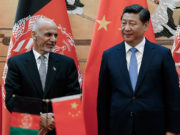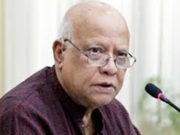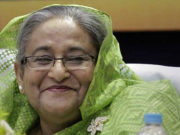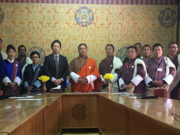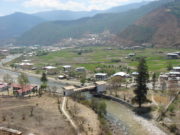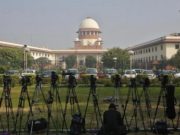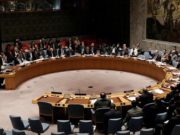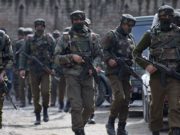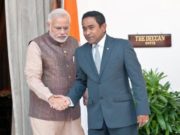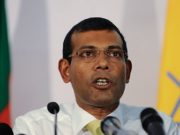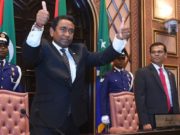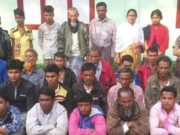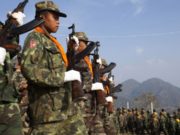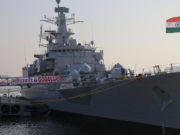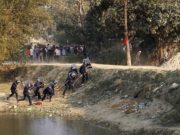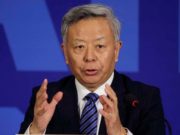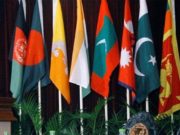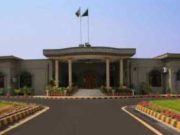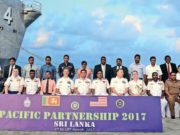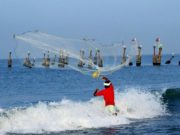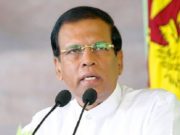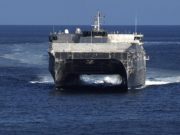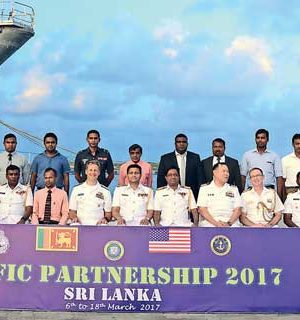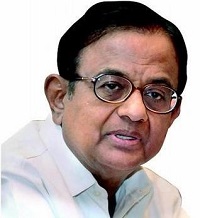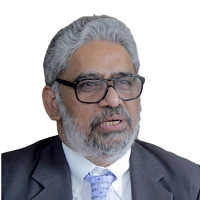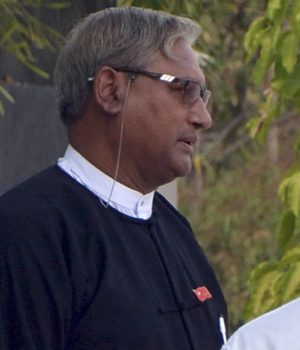The US navy’s move to quickly establish its presence in the controversy-ridden Chinese-built Hambantota port in South Sri Lanka, in collaboration with allies Japan and Australia, stems from the West’s anxiety over China’s current and potential moves in South Asia and the Indian Ocean Region.
The US Pacific Fleet on Monday started conducting a “humanitarian disaster relief and response exercise” at the Hambantota port and its environs in collaboration with the Sri Lankan, Japanese and Australian navies. The “Pacific Partnership Mission” led by USNS Fall River is described as the “largest multinational humanitarian exercise in the world.”
The mission, which is to last till March 18, includes free health clinics and repairs to a number of hospitals and schools in the poverty-stricken and draught-affected Hambantota, Galle and Matara districts of South Sri Lanka, which incidentally also happen to be the pocket borough of the pro-Chinese former President Mahinda Rajapaksa.
“Our time in Sri Lanka is about building relationships and the capability and capacity to work together for the future,” said the commander of the mission, Capt. Stanfield Chien USN.
The American rush to show the Star Sprangled Banner at Hambantota and not any other port in Sri Lanka or anywhere else, has to be seen in the current Sri Lankan and regional geo-political contexts.
Sri Lankan Scenario
The Chinese are poised to acquire an 80% stake for 99 years in the billion dollar Hambantota port, at the request of the Sri Lankan government, which is badly cash strapped and cannot pay back foreign loans, including more than US$ 6 billion owed to the Chinese. But Colombo’s offer has invited scorn from Sri Lankans across the board. They term the debt-equity swap plan as a sellout of a major national asset for a few pieces of silver. They fear that national security and sovereignty would be compromised in the years to come as tiny Sri Lanka cannot resist a determined and ambitious world power like China. President Maithripala Sirisena and Prime Minister Wickremesinghe find themselves at odds with each other on this issue. The Minister of Ports, Arjuna Ranatunga, has suggested the watering down of the Chinese stake from 80 % to 65%. And significantly, the pro-Chinese former President Rajapaksa is opposed to the swap, claiming that the arrangement that he had worked out with China while in power was more advantageous to Sri Lanka. Added to the controversy is the Chinese demand for 15, 000 acres to set up an Economic Zone, which touched off rural unrest.
The deal with the Chinese has been stalled partly because of these controversies and partly because of two cases against it pending in the courts.
The breach has given the Americans an opening to enter the Hambantota port. The on-going humanitarian mission is but the first step in the long term project to assert American economic and strategic interest in the port. The US has stolen a march over the Chinese as the Chinese had been made by the Sri Lankan government to promise not to militarize the port through visits of its naval vessels.
The Americans perhaps hope that the sustained and well-publicized humanitarian work over 13 days in the backward rural areas will stand in contrast to China’ moves to acquire 15, 000 acres of agricultural land from poor peasants for the purpose of setting up an Economic Zone to function as an adjunct to the Hambantota port and make it viable. The peasants of the area have protested against the bid to transfer their lands to the Economic Zone after paying small compensations to them. Their protests drew widespread support in Sri Lanka including former President Rajapaksa, who could not afford to alienate his own voters.
In addition, there is no great enthusiasm among Sri Lankan entrepreneurs for the proposed Economic Zone as that is most likely to be a China-dominated project in which Chinese firms will be making goods for export to the vast Indian market making use of the all ready functional India-Sri Lanka Free Trade Agreement. Sri Lankan labor is also not enthusiastic as the Chinese prefer to bring their own labor force citing shortage of skilled labor in Sri Lanka.
Regional Scenario
Although China keeps telling the world that the OBOR or the String of Pearls project is not a military project but only a developmental one from which all the countries involved will benefit by the construction of ports, roads and manufacturing facilities, the West, India and Japan are wary as they believe that China will use these facilities for its military outreach projects. China’s brazen actions in the South China Sea are cited as cases that should make the world sit up and plan precautionary counter-measures.
According to Japanese scholar Dr. Satoru Nagao, China has been expansionist making use of every opportunity to project its power in the region. When France withdrew from Vietnam in the 1950s, China occupied half of the Paracel Island; and in 1974, when the US withdrew from Vietnam, it occupied the other half. After the Soviets withdrew from Vietnam, China took over the Spratly Islands from the Vietnamese. The Mischief Reef was taken over when the US left the Philippines. All these takeovers are disputed.
The military balance in the seas in the East is shifting drastically in favor of China. According to Nagao, the Chinese navy had more diesel powered and nuclear submarines in the Indian Ocean and East Asian seas than the US navy in 2015. And the submarines are constantly on the prowl- there were 22 sightings of Chinese nuclear submarines in the Indian Ocean in 2012 alone. Since 2014, at least four submarines including three nuclear powered ones had called at ports in Pakistan and Sri Lanka, the Japanese researcher says.
Although the Permanent Court of Arbitration has rejected China’s claims of ownership of the South China Sea islands, China is ignoring the verdict and building three new airports on the seven artificial islands build by them. China is depending heavily on submarines as they do not have land bases yet in other parts of the world. But the bid to get shore based facilities abroad are on vigorously – hence the bid to get Hambantota. China already has access to Gawadar in Pakistan and Djibouti on the East African coast.
Japan, Dr. Nagao says, wants a US-Sri Lanka-Japan-India alliance to stem Chinese moves in the Indian Ocean region. If US is a global power, India is a growing economy and a regional power, which not only has a border dispute with China but is in economic and political competition with China in the South Asian region. Japan, with problems with China in the South China Sea, is apprehensive about Chinese inroads in South Asia and the Indian Ocean Region. Like the US and India, Japan is apprehensive about the day when China might be strong enough to choke oil supplies from the Middle East. With US power in the region dwindling in the Asian region due to domestic economic difficulties, Japan would like India share the responsibility for policing the Indian Ocean.
And India has every reason to consider this suggestion seriously, given the activities of the Chinese in the region. In September 2014, two Chinese diesel powered submarines docked at a container terminal built by the Chinese at Colombo port for US$ 500 million. The visit of the submarines almost coincided with the visit of the Chinese President Xi Jinping to Colombo. The Indian fear was that in case Chinese military activity gets entrenched in Colombo port, China could watch Indian shipping as Colombo port depends on Indian transshipment for 70 percent of its business. India’s protests about the visit was ignored by Rajapaksa government, with one cabinet Minister Anura Priyadarshana Yapa saying that Sri Lanka would not discuss the matter with India.
Following the September, came a nuclear submarine in November the same year, which really raised the hackles in New Delhi. India wished that the pro-Chinese Rajapaksa would go and be replaced by a pro-Indian one. And sure enough, in the January 8, 2015 Sri Lanka Presidential election Rajapaksa was defeated by the joint opposition and pro-Indian candidate Maithripala Sirisena.
But burdened with international debts left by Rajapaksa and strapped for cash at home, the Sirisena-Wickremesinghe government had to patch up with China after putting all Chinese projects on hold for several months. The regime went to China with a begging bowl and with a suggestion that China convert the debt in respect of the Hambantota port to 80 % equity with control over the port for 99 years. But this rang alarm bells in New Delhi, which has been suggesting to Colombo that it keep control over Sri Lanka’s ports while borrowing from China.
New Delhi should be happy with the controversy surrounding Colombo’s deal with China on the Hambantota port and should be welcoming the U-Japan-Australia bid to registered their presence and interest in the port which lies on key sea routes between the Middle Eastern energy hubs and the manufacturing hubs in East Asia and Japan.




